
PROGRESS IN CHEMISTRY
Scope & Guideline
Uniting Researchers for a Brighter Chemical Future
Introduction
Aims and Scopes
- Catalysis and Reaction Mechanisms:
A core area of focus includes the exploration of catalytic processes and the mechanisms underlying various chemical reactions, particularly in the context of environmental remediation and energy conversion. - Nanomaterials and Their Applications:
The journal frequently publishes research on the synthesis, characterization, and application of nanomaterials, especially in fields such as photocatalysis, drug delivery, and sensors. - Energy Storage and Conversion Materials:
Research on materials for energy storage (like batteries and supercapacitors) and conversion (such as fuel cells) is a significant theme, addressing the growing demand for sustainable energy solutions. - Environmental Chemistry and Remediation:
The journal covers studies related to environmental chemistry, including the development of materials and processes for pollution control, water treatment, and the degradation of hazardous substances. - Biomaterials and Biomedical Applications:
Another focus area includes the development and application of biomaterials, particularly those that can be used in medical devices, drug delivery systems, and regenerative medicine. - Computational Chemistry and Machine Learning:
The integration of computational methods and machine learning techniques in chemistry is increasingly highlighted, providing insights into molecular design and reaction prediction.
Trending and Emerging
- Sustainable and Green Chemistry:
There is a growing emphasis on sustainable practices in chemistry, including the development of green synthesis methods, renewable energy technologies, and materials that minimize environmental impact. - Photocatalysis and Light-Driven Reactions:
Recent publications highlight an increasing interest in photocatalytic processes, particularly for environmental applications such as CO2 reduction and pollutant degradation. - Advanced Materials for Energy Applications:
Research on advanced materials, especially those tailored for energy applications like lithium-ion batteries, supercapacitors, and hydrogen production, is becoming more prevalent. - Smart and Responsive Materials:
The development of materials that respond to external stimuli (e.g., temperature, pH, light) is gaining attention, particularly in biomedical applications and smart device technologies. - Artificial Intelligence in Chemistry:
The utilization of artificial intelligence and machine learning in chemical research, particularly for materials discovery and reaction optimization, is emerging as a significant trend.
Declining or Waning
- Traditional Organic Synthesis:
Research specifically dedicated to traditional organic synthesis methods appears to be declining, as the field shifts towards more innovative and efficient synthetic strategies involving nanomaterials and catalysis. - General Inorganic Chemistry:
There seems to be a decreased emphasis on general inorganic chemistry topics, with a more pronounced focus on applied research and materials science. - Basic Theoretical Studies:
Papers that focus solely on fundamental theoretical studies without immediate practical applications are less frequently published, as the journal prioritizes research with direct relevance to real-world problems.
Similar Journals

JOURNAL OF CLUSTER SCIENCE
Exploring the Frontiers of Cluster ScienceJOURNAL OF CLUSTER SCIENCE, published by SPRINGER/PLENUM PUBLISHERS, is a prominent and influential journal in the fields of Biochemistry, Chemistry, Condensed Matter Physics, and Materials Science. With an ISSN of 1040-7278 and E-ISSN of 1572-8862, this journal has been contributing to scientific discourse since its inception in 1990 and continues to publish cutting-edge research through 2024. It holds a respectable position in the academic landscape with its category quartiles indicating a Q3 ranking in Biochemistry and Q2 rankings in Chemistry, Condensed Matter Physics, and Materials Science as of 2023. The journal's noteworthy Scopus rankings further underscore its relevance, particularly a rank of #82 in Condensed Matter Physics, showcasing its impact and the quality of research disseminated. Although it does not currently offer open access options, it remains a key resource for researchers, professionals, and students who are invested in understanding the complexities of cluster science and its interdisciplinary applications.

Journal of Physical Chemistry C
Advancing the frontiers of materials science.The Journal of Physical Chemistry C, published by the American Chemical Society, stands as a pivotal resource in the realm of materials science and physical chemistry. With an impact factor reflecting its esteemed reputation, this journal showcases high-quality research spanning topics such as electronic, optical, and magnetic materials, as well as nanoscience and nanotechnology. Hailing from the United States, it operates without an open access model, yet its contributions are critical for advancing our understanding of surfaces, coatings, and films. Notably, the journal is classified in Quartile 1 (Q1) for several categories, underscoring its prominence in Physical and Theoretical Chemistry and related fields. Researchers, professionals, and students alike will find value in the comprehensive discussions and innovative research trends presented. The scholarly articles published from 2007 to 2024 not only drive forward scientific inquiry but also inform practical applications in various industries, making this journal an essential tool for anyone committed to excellence in the sciences.
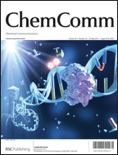
CHEMICAL COMMUNICATIONS
Catalyzing communication in the chemical sciences.Chemical Communications, published by the esteemed Royal Society of Chemistry, is a prominent journal within the field of chemical science, focusing on the dissemination of cutting-edge research in a variety of sub-disciplines including catalysis, materials chemistry, and electronic materials. Operating without an open access model, this journal provides critical insights from contributors around the globe, enhancing our understanding of complex chemical interactions and innovative applications. Ranked in the top quartile for several categories such as Ceramics and Composites, and Metals and Alloys, Chemical Communications boasts impressive Scopus rankings, securing strong positions across multiple fields and showcasing its influence within the scientific community. The journal is committed to advancing knowledge and fostering collaboration among researchers, professionals, and students, making it an invaluable resource for those looking to stay abreast of the latest advancements in chemistry and materials science. With a publication history dating back to 1965 and continuing into 2024, its rich archive serves as a vital repository of chemical research and development.

Chem Catalysis
Catalyzing innovation in chemistry research.Chem Catalysis is a leading academic journal published by CELL PRESS, specializing in the diverse and dynamic field of chemistry. Since its inception in 2021, this open-access journal has rapidly ascended to prominence, holding Q1 quartile rankings in prestigious categories including Chemistry (Miscellaneous), Organic Chemistry, and Physical and Theoretical Chemistry. With its Scopus rankings placing it in the top tiers—Rank #14 in Organic Chemistry and Rank #12 in Miscellaneous Chemistry—Chem Catalysis serves as a vital platform for disseminating innovative research and catalysis science. Researchers and professionals seeking to stay abreast of cutting-edge developments will find this journal indispensable for advancing their knowledge and contributions to the field. Located in Cambridge, Massachusetts, Chem Catalysis is committed to fostering collaboration and innovation in the chemical sciences, paving the way for breakthroughs that address global challenges.
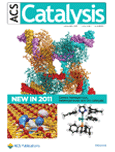
ACS Catalysis
Leading the Charge in Catalytic Research and DiscoveryACS Catalysis, published by the American Chemical Society, stands as a premier journal in the field of catalysis, offering a vital platform for researchers, professionals, and students focused on advancing the science of catalysis and its applications. With an impressive impact factor placing it in the Q1 category for both Catalysis and Chemistry (miscellaneous), this journal has established itself as a leading source of high-quality research findings, currently ranking #21 out of 408 in General Chemistry and #9 out of 68 in Catalysis according to Scopus. Since its inception in 2011, ACS Catalysis has aimed to publish innovative research that addresses the critical challenges in catalytic processes, advancing our understanding of both fundamental and applied aspects of catalysis. With a commitment to promoting open scientific discourse, it serves a vital role for those interested in the latest methodologies, discoveries, and trends in this essential discipline. Based in Washington, DC, ACS Catalysis continues to uphold the highest standards of scholarship and collaboration within the vibrant community of chemists and engineers worldwide.
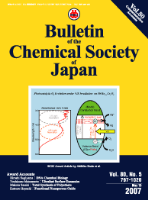
BULLETIN OF THE CHEMICAL SOCIETY OF JAPAN
Empowering Discoveries: Your Gateway to Chemical InsightsBULLETIN OF THE CHEMICAL SOCIETY OF JAPAN, published by the esteemed Chemical Society of Japan, serves as a pivotal platform for the dissemination of cutting-edge research in the multifaceted field of chemistry. With an ISSN of 0009-2673 and an E-ISSN of 1348-0634, this journal has been integral in fostering the growth of chemical sciences globally since its inception in 1965. The journal holds an impressive Q2 ranking in the Chemistry (miscellaneous) category, indicating its relevance and influence within the academic community, as reflected by its Scopus rank of #104/408, placing it in the 74th percentile. Although it is not an open-access journal, its rich content, which spans a wide range of topics in general chemistry, remains highly valued by researchers, professionals, and students alike, affirming its crucial role in advancing both theoretical knowledge and practical applications in chemistry. As it converges towards 2024, the bulletin continues to uphold its commitment to excellence in scientific communication and research dissemination in Japan and beyond.
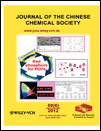
JOURNAL OF THE CHINESE CHEMICAL SOCIETY
Connecting Researchers with Pioneering DiscoveriesJOURNAL OF THE CHINESE CHEMICAL SOCIETY, published by WILEY-V C H VERLAG GMBH, is a vital resource in the field of chemistry, focusing on a broad array of topics pertinent to general chemistry and its advancing sub-disciplines. Established in 1954 and running through 2024, this journal serves as a significant platform for the dissemination of high-quality research, showcasing innovative findings and developments within the chemical sciences. With its Q3 category ranking and positioning at Rank #203 in General Chemistry per Scopus, it reflects the journal's commitment to research excellence and impact. While not an open-access publication, it ensures accessibility to a global audience, making it an essential tool for researchers, professionals, and students alike seeking to stay informed and engaged in the evolving landscape of chemistry.
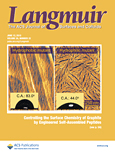
LANGMUIR
Exploring Innovative Discoveries in Surface ScienceLANGMUIR is a prominent peer-reviewed journal published by the American Chemical Society, serving as a vital platform for research in various fields, including condensed matter physics, materials science, electrochemistry, and spectroscopy. With an ISSN of 0743-7463 and an E-ISSN of 1520-5827, this journal has established itself as a reputable source of cutting-edge scientific findings since its inception in 1985. Recognized for its rigorous academic standards, LANGMUIR holds significant ranking positions, including Q1 in condensed matter physics and spectroscopy, and Q2 categories in electrochemistry and materials science, reflecting its impactful contributions to these disciplines. Although the journal does not currently offer open access, it continues to foster collaboration and discussion among researchers by publishing high-quality articles that explore the frontiers of chemistry and physics. By engaging with LANGMUIR, readers can stay informed about the latest advances in surface and interface science, making it an essential resource for professionals, researchers, and students dedicated to these fields.

COMMENTS ON INORGANIC CHEMISTRY
Exploring the Depths of Inorganic ScienceCOMMENTS ON INORGANIC CHEMISTRY is a prestigious academic journal published by Taylor & Francis Ltd, specializing in the dynamic field of inorganic chemistry. With an impressive impact factor placing it in the Q1 category, this journal ranks #6 out of 79 in its field, reflecting its high influence and contribution to the discipline, with a remarkable percentile ranking of 93rd. Since its inception in 1981 and spanning publications until 2024, this journal serves as a crucial platform for researchers, professionals, and students to disseminate groundbreaking findings, review articles, and discussions on contemporary topics in inorganic chemistry. Although it is not an Open Access journal, the rigorous peer-review process ensures the publication of high-quality research. By bridging theoretical and practical aspects of inorganic chemistry, COMMENTS ON INORGANIC CHEMISTRY remains an essential resource for advancing knowledge and fostering innovation within the scientific community.
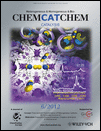
ChemCatChem
Advancing Catalysis and Chemistry for a Brighter Tomorrow.ChemCatChem is a leading international journal published by WILEY-V C H VERLAG GMBH that has been making significant contributions to the fields of catalysis, inorganic and organic chemistry, as well as physical and theoretical chemistry since its inception in 2009. With an established reputation for excellence, this journal holds commendable rankings in various categories, including Q1 in Inorganic Chemistry and Q1 in Organic Chemistry, demonstrating its pivotal role in advancing scientific knowledge and innovation. Notably, it has achieved a high Scopus ranking, securing 10th place out of 79 in Inorganic Chemistry, among others, showcasing its influence and quality. Although open access options are not available, the journal offers cutting-edge research articles, reviews, and insights that are vital for researchers, professionals, and students aiming to stay at the forefront of chemical science. With its address rooted in Weinheim, Germany, and convergence projected to continue until 2024, ChemCatChem remains a dynamic platform for disseminating vital advancements within the chemical community.